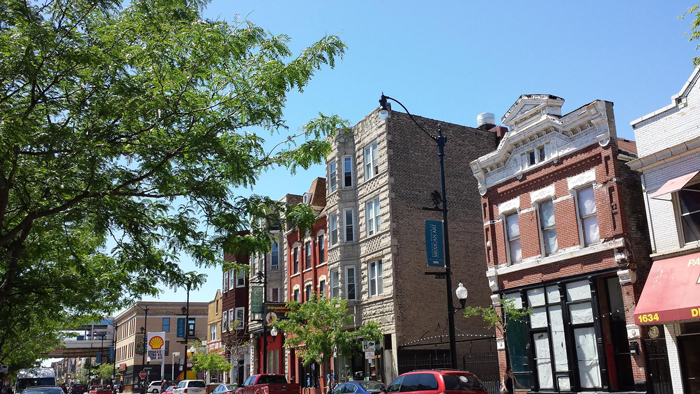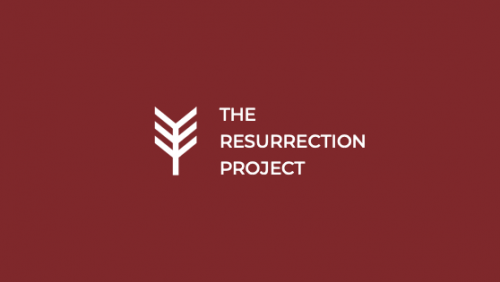Find Your New Home: Apartments Available for Lease. Click Here!
Balanced Development vs. Gentrification

In the spirit of creating an informed dialogue over the recent controversies regarding the Pilsen Land Use Committee, Raul Raymundo of The Resurrection Project offers his take on the matter and the importance of providing all the facts.
Pilsen has always been an immigrant community and continues to be one. First it was Eastern European, and for the last 50 plus years Pilsen has been a community of primarily Mexican/Hispanic immigrants.
Given its proximity to downtown and other assets (Lake, Museums, Expressways), the community has endured threats of gentrification. Since the foreclosure crisis, Pilsen’s housing values have recovered faster than other parts of the city (e.g., Back of Yards, Little Village, Englewood). As a result, Pilsen has attracted the attention of several private developers looking to invest in the neighborhood.
However, private investments, if left unchecked, cause displacement. Hence, enter the Pilsen Land Use Committee and its members that have been serving Pilsen for decades: Pilsen Neighbors Community Council (60 years plus), 18th Street Development Corporation (40 years plus), Alivio Medical Center (27 years plus), and The Resurrection Project (25 years plus).
These groups, along with others, are committed to building on the historical resilience of the community and making sure there is balanced development throughout the neighborhood. For decades these groups and their partners have anchored projects, initiatives, and programs that continue to serve thousands of immigrant families.
On health, for example, Alvio Medical Center is not only a premier Latino-serving healthcare provider, it also has two key locations in the East and Westside of the neighborhood. PNCC provides scholarships to area high school students and has the annual Fiesta del Sol attracting thousands of residents to celebrate its culture. ESDC has been working Industrial Employers and assisting local businesses to grow.
The Resurrection Project has developed hundreds of affordable housing units and educated thousands of families in homeownership opportunities and financial literacy. In addition, it has created other assets like Centro Familiar Guadalupano, Casa Maravilla for seniors, and La Casa Student Housing. Most recently, it completed Casa Querétaro, where rents begin around $300 per month.
PLUC members understand that it is important to be proactive and work with all public officials representing the community to create mutual accountability. In the 25th Ward, Alderman Solis represents Pilsen along with other several neighborhoods in the Ward. During his tenure, Alderman Solis has presided over significant improvements in the neighborhood including new schools, new community facilities, and improved parks and green spaces.
As Alderman, Solis is committed to balanced development for neighborhood residents and as such is committed to honoring PLUC’s community decree of the 21% set-aside decree and/or comparable substantial community benefits for housing developments requiring a zoning variance for 8 units and above.
These efforts have made Pilsen the neighborhood with the highest set-aside percentage in Chicago, since the city’s Affordable Housing Ordinance only requires that 10% of new units are set aside as affordable housing.
PLUC’s mission has and always been to ensure that new developments in Pilsen are carried out in a balanced manner so that the people of this community are not displaced. PLUC, as a community-created entity, has already established a history and a methodology by which the social, economic, and cultural realities of the Pilsen neighborhood are never ignored, but rather wholly accounted for in any new property development.
Two recent developments reviewed by PLUC illustrate the Alderman’s and committee members to create balanced development and not gentrification. On the one hand, PLUC decided against recommending the proposed development of more than 500 units at 18th and Peoria because this project was too dense and did not produce enough affordable housing (21%) and/or additional comparable community benefits.
On the other hand, PLUC favorably recommended the zoning approval change for the 99-unit development at 1414-48 W. 21st Street. In this project the PLUC waive the 21% affordable community set-aside decree because of the substantial and comparable community benefit it provide the neighborhood.
In this project the developer agreed to donate a one-acre parcel of land next to Benito Juarez Community High School’s (BJHS) existing soccer field. This parcel of land will allow BJHS to expand it recreational fields to provide more physical space for students, their families, and local residents to have access to high quality open and green spaces. The estimated value of this land is at least $1.4 million dollars.
Second, this development will comply with the City of Chicago’s Affordable Housing Ordinance—it will set-aside 10% of the total units (10) for families with household incomes at or below 60% the area median income for the region.
The income and rent levels for these units are set by national affordable housing guidelines. All of the units in this development were designed to a decent size for living as they range in size from 1,100 sq. ft. to 2,100 sq. ft. and the rent levels for these units will be between $935.00 and $2,100.00.
Alderman Solis’ and PLUC complied with applicable zoning laws in issuing its recommendation to approve the project. Per the city’s zoning requirements, only persons living within 250 feet of a proposed development are required to be notified and informed about the new developments.
The Alderman’s office satisfied and exceeded this requirement. On February 3, a community meeting was held at 2013 South Laflin at 6:00 PM that was open to the public, and several Pilsen residents beyond the immediate area were in attendance.
While certain groups with political agendas and news outlets have focused attention on PLUC’s recommendation of the 99-unit development, lost here is the amazing fact that the PLUC denied the recommendation of the 500-unit development on 18th and Peoria in which the Alderman will be held accountable to honor the community’s 21% set-aside decree of affordable housing.
This is critical especially since according to the developer, “Property Markets Group’s contract to buy the property closes this summer…and the developer plans to buy the property whether Solis signs off on a development plan or not.” (DNAinfo 2-11-16)
PLUC represents the community’s best interests but does not pretend to speak for all residents. It’s only natural that controversial topics such as gentrification and balanced development stoke arguments, debates, and even misunderstandings. However, for the community to truly grapple with these challenges, it must have all the facts.
The misinformation by groups pretending to represent community interest when it’s politically expedient, and incomplete reporting by news outlets, can leave the public with a distorted view and misunderstanding about the true nature of PLUC’s work to preserve balanced development in the community. What’s more dangerous than gentrification is the dissemination of incomplete or even inaccurate information that benefits particular agendas but not the community as a whole.
It’s the responsibility of everyone in the community to engage in the conversation with nothing less than all the facts, and leave the formation of opinions and conclusions to its informed citizenry.
Raul Raymundo
TRP CEO and member of the Pilsen Land Use Committee



